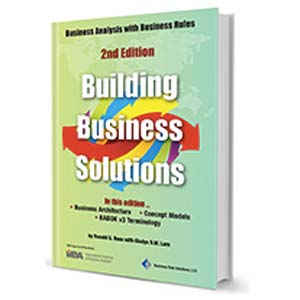Q5: Business Rules and Business Agility
Question: How do business rules support business agility?
Think of business rules as expressing business practices. These practices can cover a wide range of business concerns, including the composition of products, the customization of services for individual customers, operational hand-offs with suppliers, implementation of regulatory constraints, and so on.
Historically, rules have been embedded (hard-coded) in processes, in many different places and often inconsistently. That approach provides no easy traceability for any given rule. Changing rules inevitably requires IT intervention, along with the associated costs and delay. From a business perspective, such support is simply not agile.
Business rules support business agility by providing pinpoint means to evaluate and modify business practices. Rules are expressed and managed independently of processes (a.k.a. rule independence). By that means they can be consolidated (single-sourced) and evolved more rapidly and reliability. From a platform point of view, the Manifesto states the principle this way ...
6.1. A business rules application is intentionally built to accommodate continuous change in business rules. The platform on which the application runs should support such continuous change.
Clearly some platforms are much better than others in this regard. The quality of their support for rules should be a critical factor in selection and design.
Unfortunately, many organizations are trapped as much by legacy platforms as by legacy systems. True business agility requires migration to new platforms as quickly and easily as possible.
For example, a pressing concern for many organizations these days is mobile computing and social media - capabilities not even on the horizon ten years ago when the Manifesto was written. There's no end to platform innovation in sight - and companies will always want to get on-board faster and faster. Is there any way to ever do that without knowing your business rules? No! So the Manifesto recommends ...
10.3. Business rules should be organized and stored in such a way that they can be readily redeployed to new hardware/software platforms.
References:
[1] The Manifesto is free, only 2 pages long, translated into 15 languages. Have a quick look (or re-look!). No sign up required. Well worth your time.
About our Contributor:
Online Interactive Training Series
In response to a great many requests, Business Rule Solutions now offers at-a-distance learning options. No travel, no backlogs, no hassles. Same great instructors, but with schedules, content and pricing designed to meet the special needs of busy professionals.











